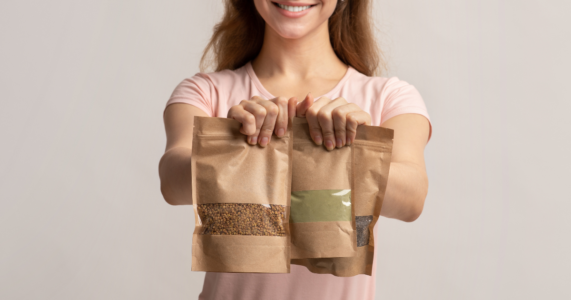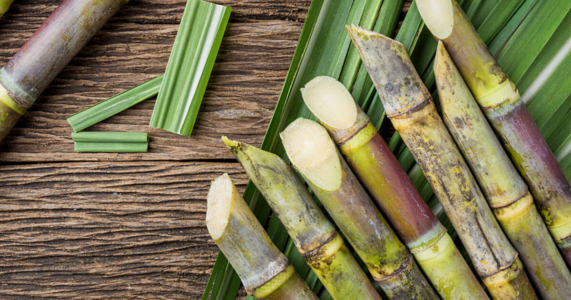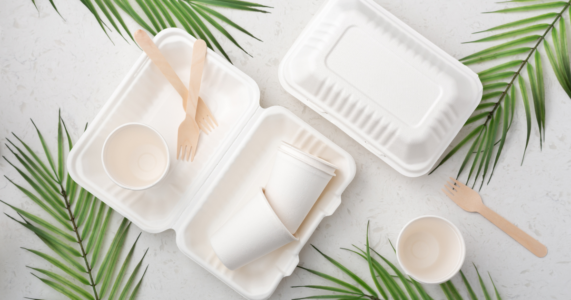What is Sugarcane Fiber and Why is it the Most Sustainable Material on the Market?
Sugarcane Fiber is a newly developed sustainable material that has taken over the packaging industry and has become an environmentally friendly alternative to many different types of containers such as cardboard boxes. Sugarcane, also known as bagasse, is a fast-growing renewable resource, it can be used for several different purposes. Bagasse is the dry pulpy fibrous residue that remains after stalks are crushed to extract their juice. In this blog, Davpack will be explaining how Sugarcane fiber is produced, what exactly it is made from, how it can be integrated into the packaging industry, and what the benefits are when it comes to the environment and improving your eco-credentials. There is no better time than now to increase your business’ eco-friendliness, not only will learning about and using renewable materials in your warehouse improve your impact on the ecosystem, but it will also impress customers and induce consumer loyalty due to your care shown for the environment! That is why this blog might change your ways of working, increase your company’s sustainability and help grow your sales.

First Things First, What is Sugarcane Fiber?
Bagasse – an element of sugarcane fiber – is the dry, pulpy, and fibrous residue that remains after the stalks are crushed. This excess juice can be used for the production of heat, energy, and electricity, as well as in the manufacturing of pulp and building materials. The sugarcane stalk would usually be incinerated due to being a non-edible part of the plant, there used to be no purpose for it after the bagasse extraction. However, to divert the material from being wasted, the leftover canes are collected and turned into pulp. With the addition of water, the sugarcane pulp can be transformed into a paste, this substance can then be pressed into any desired form, hence why it can be used as an alternative for parcel boxes alongside other objects such as plates or bowls. The highly renewable resource encourages companies to use zero-waste practices across the World.
What Forms of Packaging can Sugarcane Fiber be used for?
Sugarcane Fiber’s most popular use is for replacing paper products, that’s why within the packaging industry it is more likely to replace boxes as a completely renewable and carbon-neutral resource. It can commonly act as an alternative for cardboard boxes, plywood, and particleboard. As an environmentally sound packaging solution, it has been shown to reduce wood usage by more than 52%. The types of containers it can be used for is widely variable, due to it having durable characteristics, so it is often suitable as parcel boxes, but due to its heating temperature of 200°C, freezer-safe, microwavable safe, and insulating properties – it is also eligible for food packaging uses. It is suitable for protecting and conserving greasy, wet, or hot food – all whilst being fully compostable – so there is no wonder why it has become a favourite source for packaging.
Recently the material has been used more innovatively – as garment bags. The specification of sugarcane packaging does not differ from the average form of polythene covers. Customers that use this material can experience the same level of strength, durability and functionality without harming the environment. The sugarcane fiber can guard clothing or any contents inside the bag from water damage, grease, dirt, dust, or bacteria to ensure ideal hygiene and personal protection levels from both the supplier and consumer’s end. The eco-friendly bags can also withstand a substantial amount of weight with the unlikeliness to tear or become damaged, guaranteeing a professional and attractive appearance to the wrapping.

How is using Sugarcane Fiber Beneficial for your Business?
Countless benefits come along with introducing sugarcane fiber as a packaging material into your warehouse. The first is that consumers now care about the environment and how sustainable the brand they are buying from is. Millions of individuals follow the hashtag ‘sustainable fashion’ on Instagram, and this correlates with the trend of posting eco-friendly products that people purchase. The population’s tolerance of companies using shortcuts and in turn, damaging the environment, is depleting, consumers will now allow slower delivery and higher product prices to ensure climate care from a company. Furthermore, this can induce a more loyal clientele and encourage new customers to buy from your business. Helping your workspace have a constant flow of profits and an increase in sales. Using sugarcane fiber can be advantageous in terms of money, not only by growing your company’s reputation and intake but by reducing the amount spent on discarding waste and taking care of lowering the warehouse’s carbon footprint. The material is emission-free since the growing process of creating the packaging removes carbon dioxide from the atmosphere. This means, the carbon emitted through transport from the supplier to the storehouse is completely offset and there is zero reliance on any fossil fuels. Moreover, if the business is moving items to different locations of the company, the material can easily be recycled or reused. Customers can further recycle their garment bags or other forms of packaging in the same way they would normally recycle, lowering both the brand and consumer’s impact on the ecosystem.
Other benefits of using sugarcane fiber for packaging purposes include its renewability. Approximately 1.2 billion tonnes of sugarcane are produced every year. 100 million tonnes of bagasse are created annually from the huge amount of sugarcane grown. A large proportion of this bagasse used to be discarded and incinerated in the past however, using the substance as a packaging solution finds a new purpose for this agricultural by-product that would otherwise have been disposed of. Now, this latest form of packaging reduces waste and supports farmers.
Lastly, sugarcane fiber is biodegradable and compostable, within commercial composting facilities, sugarcane has the opportunity to break down even faster after consumer use. Within 60 days bagasse can be composted entirely, it will then turn into a nutrient-rich fertilizer of nitrogen, potassium, phosphorus, and calcium. If the bagasse and sugarcane don’t end up in composting facilities, the biodegradability of the material ensures that it will break down naturally, even if it does end up on the side of the road or in a landfill. The substance will only need between 30 to 90 days to biodegrade.

Overall, if you haven’t heard of sugarcane fiber before it is worth researching whether or not it is a suitable substance for your warehouse. From its environmentally sound properties, money-making and money-saving benefits, alongside its ability to impress customers and improve your brand’s reputation, there are countless reasons why it should be introduced as a packaging solution. If you are interested in buying sustainable, high-quality and low-cost packaging items, shop at Davpack today!
Sarah Hickson
Latest posts by Sarah Hickson (see all)
- What is Sugarcane Fiber and Why is it the Most Sustainable Material on the Market? - 1st September 2022
- Packaging that is More than Just a Cardboard Box – Easy Branding Boxes - 27th July 2022
- How to Protect Temperature-Sensitive Goods During Transit - 14th July 2022
